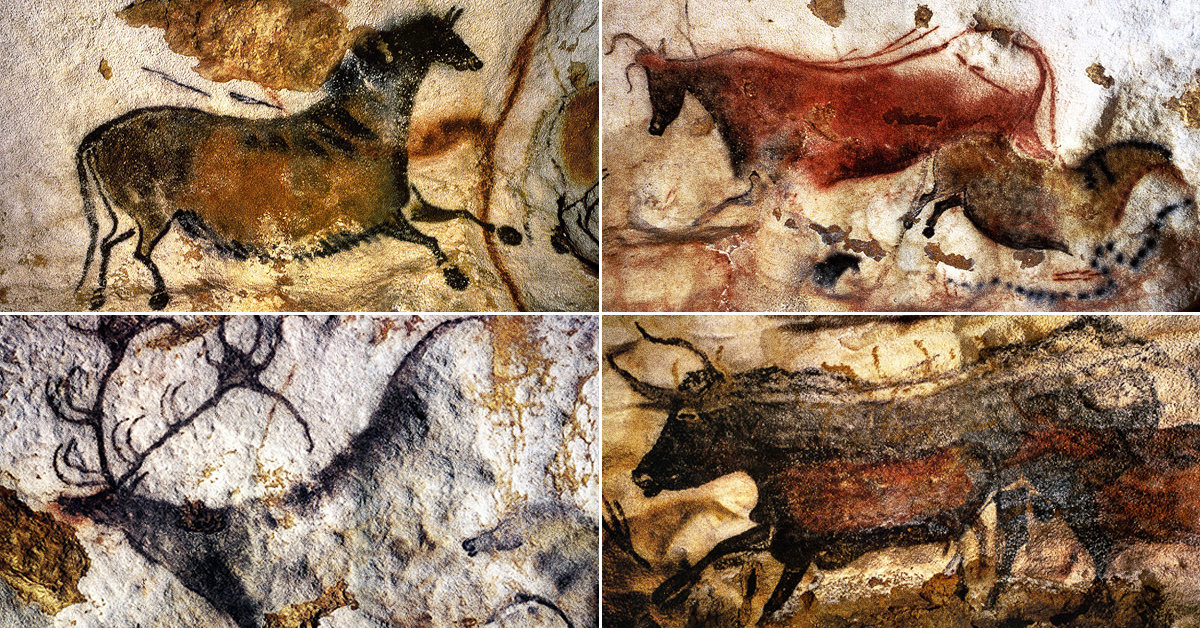The World’s Most Iconic Prehistoric Cave Paintings
Long before written language, prehistoric people left behind vivid stories etched into stone. Their cave paintings and petroglyphs appear on nearly every continent—simple yet powerful snapshots of daily life. These images often show communal gatherings, hunts, rituals, and the animals that lived alongside early humans.
By studying the subjects, colors, and placement of these paintings, researchers can reconstruct remarkable details about prehistoric climates, wildlife, tools, communities, and even the pigments and techniques early artists used.
Below are ten of the most famous prehistoric cave paintings found around the world.

Magura Cave, Bulgaria
Located in southern Bulgaria, Magura Cave houses one of the world’s largest and most diverse collections of prehistoric art. Dating between 4,000 and 8,000 years old, the cave holds more than 700 individual images—many painted using bat guano, which was plentiful in the area.
Magura Cave opened to tourists in 1961 and has long served many purposes: a shelter, a cheese-storage chamber, even a guerrilla hideout. Today it’s better known for its artwork depicting dancing figures, hunting scenes, and numerous animals.
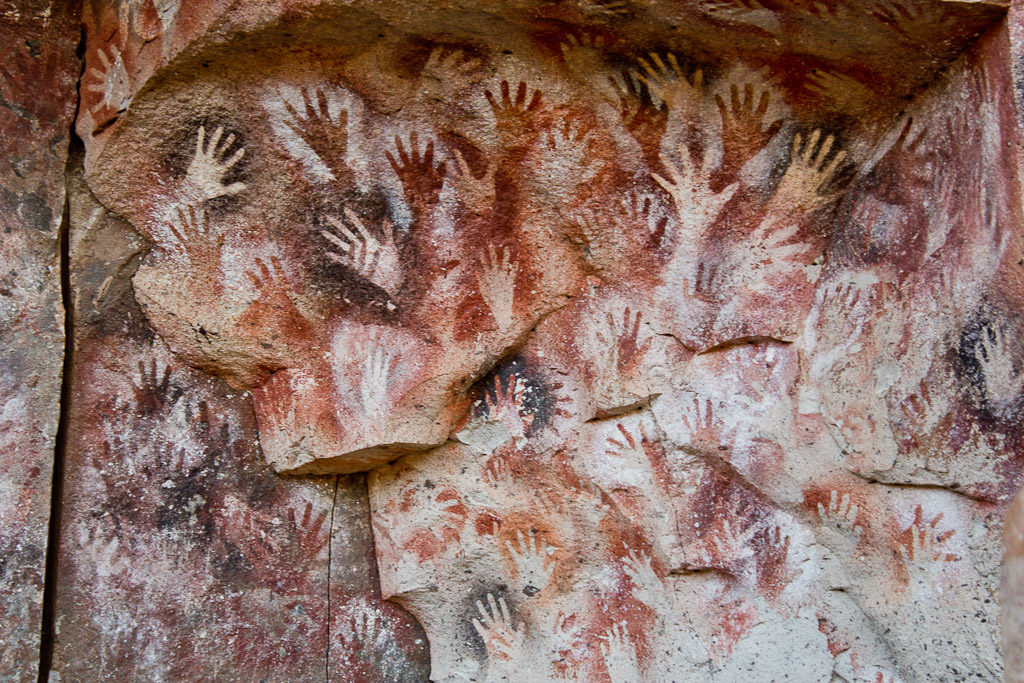
Cueva de las Manos, Argentina
In the windswept region of Patagonia lies Cueva de las Manos, or “The Cave of Hands.” Its walls are covered in striking stenciled handprints, most of them left hands—suggesting the artists sprayed pigment with their right hands.
Created between 13,000 and 9,500 years ago, the paintings also include guanacos and hunting scenes. These images are believed to be the work of ancestors of the hunter-gatherer groups encountered by European settlers in the 19th century.
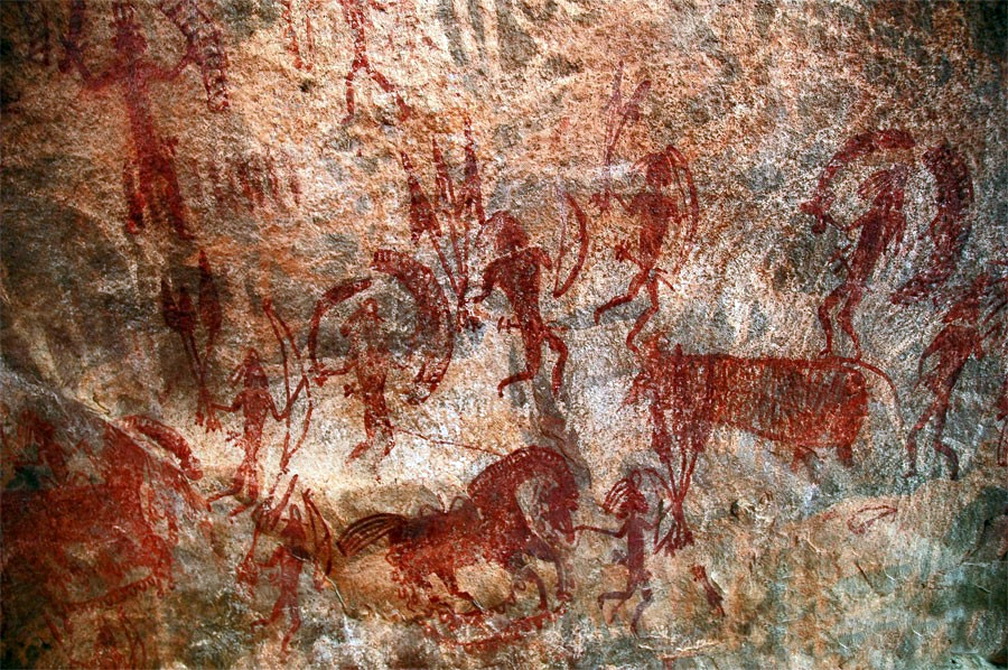
Bhimbetka Rock Shelters, India
The Bhimbetka rock shelters of central India contain some of the oldest known rock art in Asia. Discovered in 1958, the site features vivid depictions of early life—tigers, lions, crocodiles, bulls, and the daily activities of prehistoric communities.
Most of the paintings date back about 12,000 years and were created primarily in red and white pigments, though yellow and green appear occasionally. The name “Bhimbetka” means “the place where Bhima sat,” referencing a character from the Indian epic Mahabharata.
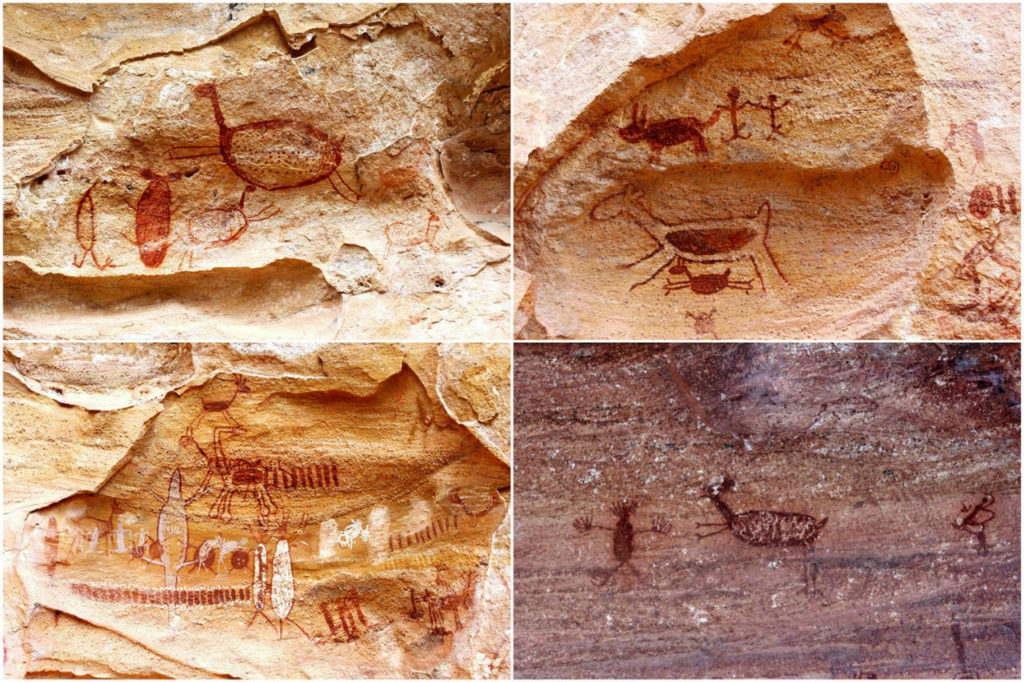
Serra da Capivara, Brazil
Brazil’s Serra da Capivara National Park holds thousands of prehistoric images, some possibly as old as 25,000 years. Many paintings show communal rituals, hunting parties, and local wildlife.
However, the age of these works is still debated. If the oldest estimates are accurate, they could reshape our understanding of early human settlement in the Americas.
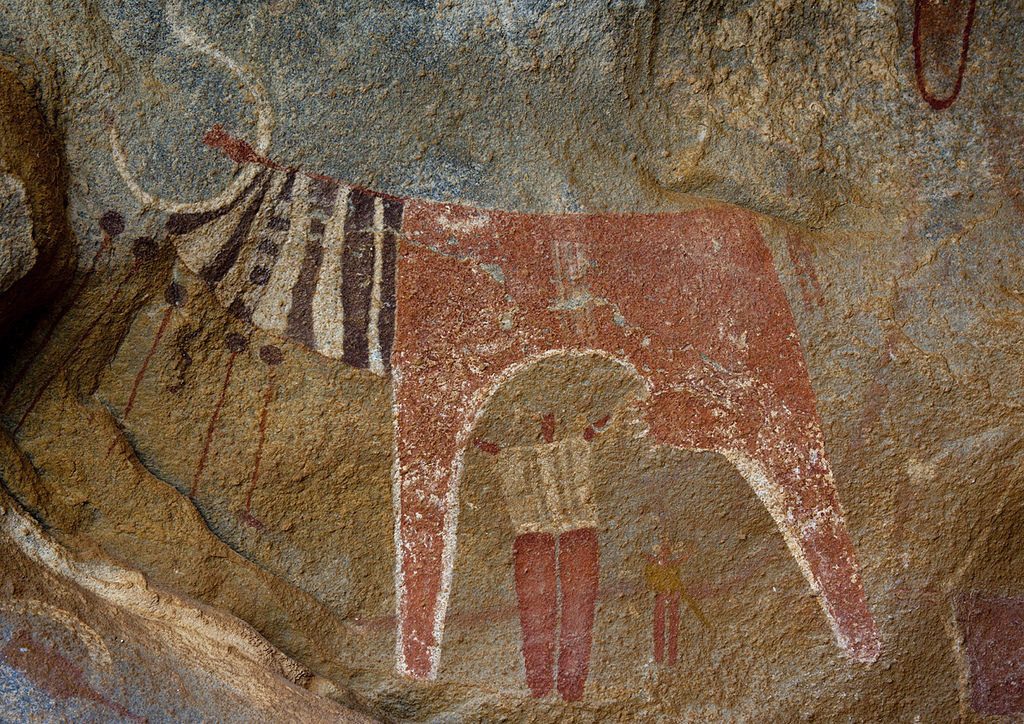
Laas Geel, Somalia
Africa—believed to be the cradle of humanity—is rich in ancient rock art, and Laas Geel in Somalia is one of its treasures. The cave paintings depict ceremonial scenes involving cattle adorned with decorative markings, alongside figures of people, dogs, and even giraffes.
Due to ongoing conflict in the region, Laas Geel remains little known outside academic circles, despite being one of the most stunning archaeological sites in the Horn of Africa.
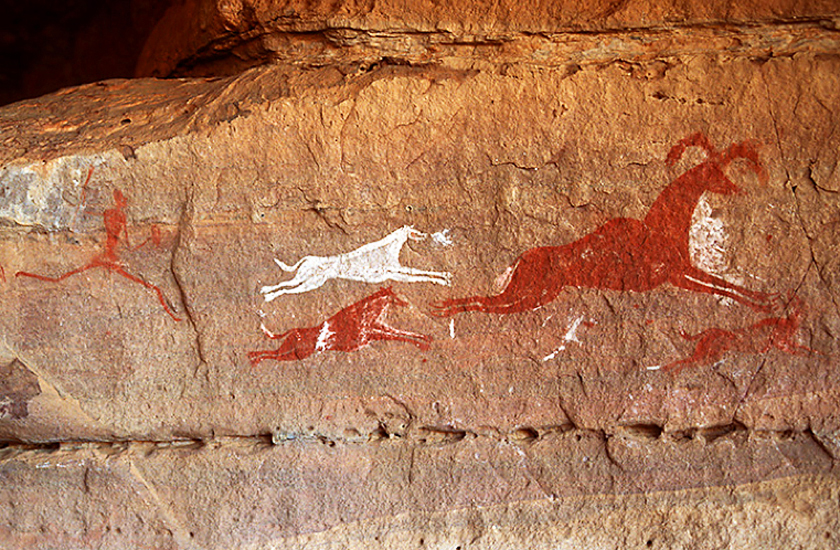
Tadrart Acacus, Libya
Spread across a rugged mountain range in the Sahara Desert, the Tadrart Acacus paintings date as far back as 12,000 BCE. Their significance lies in what they reveal about the climate thousands of years ago.
Images of lush forests, lakes, and wildlife demonstrate that the Sahara was once far wetter than today—slowly transforming into desert over millennia.
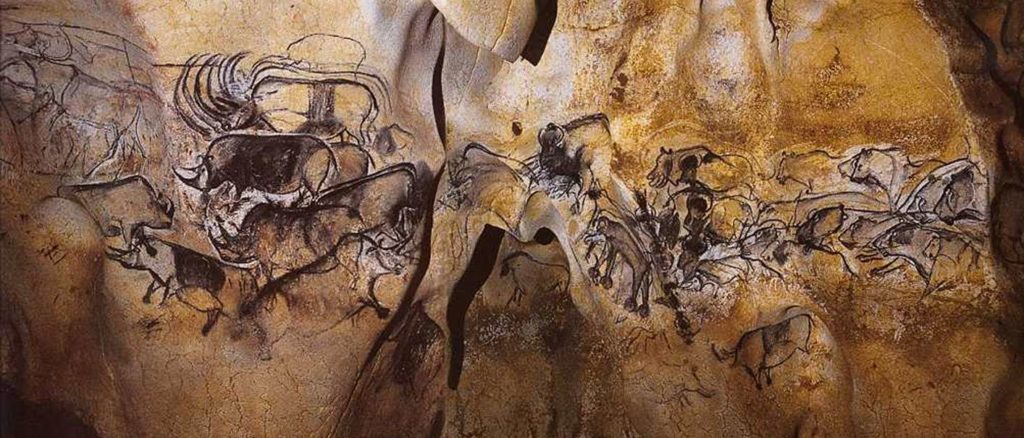
Chauvet Cave, France
Discovered only in 1994, Chauvet Cave contains some of the oldest known cave paintings, dating back around 32,000 years. The artwork is remarkably sophisticated, featuring lions, rhinoceroses, bears, and other Ice Age animals in dynamic motion.
In 2014, the site was recognized as a UNESCO World Heritage Site, and it has since become an archaeological landmark in southern France.

Kakadu Rock Art, Australia
Australia’s Aboriginal communities have created rock art for tens of thousands of years, and Kakadu National Park holds more than 5,000 documented sites. Some paintings are over 20,000 years old.
The images include hunting scenes, depictions of daily life, and even X-ray–style drawings that show the skeletal structures of animals—evidence of the deep ecological knowledge held by Indigenous Australians.

Altamira Cave, Spain
The Altamira Cave paintings were the first prehistoric artworks ever identified by modern researchers. When discovered in the 19th century, the paintings were so well preserved that many scholars dismissed them as forgeries.
Later studies confirmed their authenticity: these vivid depictions of bison, deer, and human gatherings are around 35,000 years old, making Altamira a foundational discovery in paleolithic art studies.
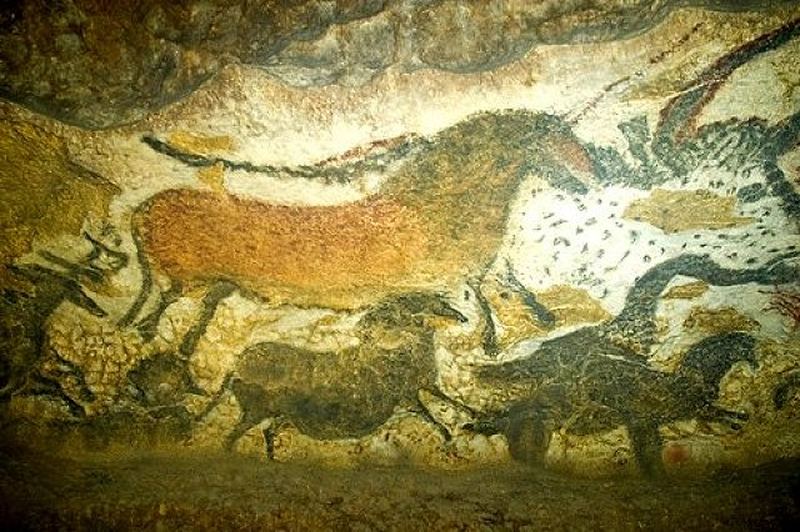
Lascaux Cave, France
Perhaps the most famous prehistoric art site of all, Lascaux is often called the “Prehistoric Sistine Chapel.” Created about 17,000 years ago, its walls are covered in remarkable scenes, including the iconic Hall of the Bulls, which features enormous bulls, horses, and deer painted with impressive detail.
To protect the fragile artwork, the original cave is closed to the public. Visitors can instead explore a meticulously crafted replica nearby.

